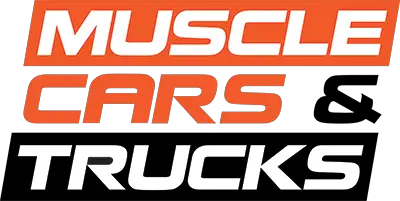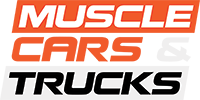The current Dodge Challenger is the purest and most resilient of today’s muscle cars, having gradually evolved since its debut in 2008, whittling and tweaking its overall design. But the big story is what Dodge continued to do under the hood. “More power, all the time,” is what customers wanted. And that’s exactly what they’ve gotten over the years, with the latest news being the stage I and II performance kits for the Challenger SRT Hellcat Redeye, which can boost output to an outrageous 855 horsepower.
Let’s take a look at how we got here…
The Original Dodge Challenger

The original Dodge Challenger debuted in 1969 as a 1970 model year vehicle to complement the Plymouth Barracuda. A little late to the party (the Mustang was out in 1964, and the Camaro in 1967), the Challenger made up for its tardiness with incredible customization and variety, with just about every engine available under the Chrysler umbrella as an option, plus a rainbow of colors.
Unfortunately for the Dodge Challenger and the rest of the muscle car party – still considered to be the golden age if you just want to talk about how many of them there were at the time – an extinction event was on the horizon.
Along with the creation of the EPA in 1970, which set its crosshairs right at everybody’s tailpipe, there was the OPEC embargo of 1973. On one end, you had automakers forced to worry about emissions for the first time. Not good for carbureted muscle cars without simple technology such as the catalytic converter, and even worse when there’s a worldwide gas shortage. By 1974, the muscle car market had essentially evaporated, and the Dodge Challenger was forced to tap out.
According to Hagerty, Chrysler took a turn for the worse during the rest of the decade, needing a federal bailout in 1980, whereafter the company got by with focusing production on K-cars and minivans. The Challenger nameplate was resurrected in 1978, as a rebadged Mitsubishi Lambda (it was even built in Japan), which inevitably got euthanized in 1984. Let’s not talk about it any further.
By 1992, with Bob Lutz around, Chrysler started to re-establish its credibility in the high-performance market with the Dodge Viper, which scored the first of three consecutive class wins at Le Mans in 1998. The third generation of the Hemi V8 went on sale in 2003, and not long after, the Street and Racing Technology (SRT) team produced higher performance versions of the Chrysler 300, Chrysler Crossfires, Jeep Grand Cherokees, and even Ram trucks (the mighty SRT10). The darkest days appeared to be behind everybody.
By 2005, DaimlerChrysler began working on a vehicle to channel the brand’s heritage. West Coast Pacifica Studio Designer, Michael Castiglione, got to work on the exterior design for the car.

The Dodge Challenger Returns
A 1970 Dodge Challenger was brought into the studio to help develop the concept car. Finally, in 2006, the glorious Orange Pearl Challenger concept car debuted at the North American International Automobile Show in Detroit. It resembled the reincarnation of the classic Challenger; only it was significantly larger than the original. The reasoning behind this was that the new production car was built on the existing LX platform. The frame of the Challenger essentially makes it a Charger with two doors less and a wheelbase that is reduced by four inches. The result, a car that is considerably longer and wider than the original Challenger with 1,400 pounds of extra weight.
The concept car was such a hit that DaimlerChrysler was compelled to put it into production. Unfortunately, it was too late for the vehicle to have an entire model year run, so the company decided to make the high-performance SRT8 model the only version offered for the first year. As a result, every 2008 Challenger was equipped with a 6.1-liter Hemi that featured the car’s bloodlines. The third-generation Hemi V8 made 425 horsepower and 420 lb-ft of torque. The engine was mated with a five-speed automatic, and the powertrain was able to push the Dodge Challenger from 0-60 in 4.7 seconds while growling through the quarter-mile in 13.1 seconds at 108 mph. The top speed was 168 mph.
In 2009, the entire model lineup was introduced, with the SE sitting at the bottom. It came equipped with a 3.5-liter V6 which made 250 horsepower and 250 lb-ft of torque. The mid-level trim was the R/T which gave customers a smaller and older version of the Hemi, 5.7-liters that produced 375 horsepower and 404 lb-ft of torque. Lastly, a six-speed Tremec manual was now offered as an option for the Dodge Challenger. To make customers think they were getting customized, one-of-a-kind cars, a wide variety of colors, and special editions were available. From Plum Crazy, Top Banana, and Toxic Orange for colors to Rollye Redline, R/T Scat Pack 1320, and 392 Yellow Jacket for special editions. Build accessories were almost limitless from the beginning.
Two new engines were introduced in the 2011 model year. A twin-cam 3.6-liter Pentastar V6 rated at 305 horsepower and 268 lb-ft of torque. Meanwhile, the SRT models got the 6.4-liter Hemi named the 392 in honor of the iconic engines of the late 1950s. The new motor developed 470 to 485 horsepower and 470 to 475 lb-ft of torque. Several other upgrades came to pass over the next few years, but ultimately the Dodge Challenger began to lag behind their competition. The Mustang GT500 produced 662 horsepower, while the Camaro ZL1 made 580 horses. On top of the horsepower wars, critics got tired of the design. However, customers argued that it should stay the same, which is why the Challenger has never received a redesign.

The Creation Of The Hellcat
Instead, Fiat Chrysler Automobiles (FCA), which was formed in the wake of Chrysler’s bankruptcy in 2009, got to work with their own engine to compete within the horsepower wars. An augmented 6.2-liter version of the Gen III Hemi with a 2.4-liter IHI-built twin-screw supercharger that produced 11.6 pounds of boost. Altogether, the engine made 707 ponies and 650 lb-ft of torque. The Big Engine Casting (BGE) block incorporated thicker walls and higher nickel content to compensate for the extra power. The aluminum pistons were forged instead of cast, and oil squirters cooled them. The codename given by powertrain chief Bob Lee (which he used for the engine) was then given to the new model. Hellcat.
The extra power meant more heat, and an additional air intake was covertly placed in the inner driver-side headlight housing while a pair of subtle heat extractors were carved into the hood. The Dodge Challenger SRT Hellcat also had an optional eight-speed ZF automatic transmission and a slick new dual-opening grill. MSRP for the Hellcat was $64,000. The new model could go from 0-60 in 3.7 seconds, do a quarter-mile in 11.2 seconds, and had a top speed of 199 mph. And it has all of the supercharged V8 noise to go with it.
By 2017, the Dodge Challenger was offered in 14 distinct trims, from the SXT to the 392 Hemi Scat Pack Shaker. Unfortunately, by this time, the Hellcat was old news, and the competition at Ford and GM were still in the race. Luckily, Heuschele and SRT engineer Jim Wilder had started unofficially working on a Hellcat upgrade in January 2015. The project ended up being cool enough that FCA executives wanted to turn it into a car, and the Demon began to take shape.

The Dodge Challenger Demon
Despite the Demon sharing the same 6.2-liter V8 and cylinder head with the Hellcat, it was quite different. The Hemi also received 25 upgraded components, including pistons, cooling, rods, and fuel injection systems, and was painted red instead of orange. To top it all off, it got a larger 2.7-liter supercharger that generates 14.5 pounds of boost. Power output was astounding, at 808 horsepower and 717 lb-ft of torque (which could be increased to 840 and 770 when the Demon was fed 100 octane race fuel). The car hurtled from 0 to 60 in 2.3 seconds, with a quarter-mile of 9.65 seconds at 140 mph (too fast to compete in NHRA’s streetcar class). Not only all of this, but the Demon was the first production car capable of popping a wheelie.
The menacing air scoop traversed nearly the entire hood, and a widebody treatment was needed to clear the bespoke street-legal 315/40R18 drag radial tires from Nitto. Overall, the Demon had devilishly good looks. The Dodge Challenger SRT Demons were sold without passenger or rear seats to save some weight for the vehicle. Luckily, both were available for $1 apiece. Another $1 option was the “Demon Crate” which included an assortment of Snap-on tools, skinny front drag tires, and the components that would enable owners to unlock all 840 ponies after putting it on 100 octane. Prices started at $85,000, and it didn’t take long for all 3300 units to sell before the plant could even build them.

The Future Of The Dodge Challenger
In 2019, FCA released the Challenger SRT Hellcat Redeye, which gave the standard Hellcat the Demon engine, although detuned to 797 horses. 2020 brought about the Challenger SRT Super Stock, a redeye with an additional 100-rpm that boosts power up to 807 ponies. For 2021, there are 10 Dodge Challengers available with a plethora of equipment and appearance packages. All-wheel drive is available on lower-end models, while upper-tier models can be ordered with Widebody sheet metal. Prices enable just about anyone to get themselves behind the wheel from about $28,000 to $81,000. And that’s before we start talking about the Redeye Jailbreak models, or putting things into the hands of a Dodge Power Brokers dealer for upgrades up to 855 horsepower through the Direct Connection program.
Sure, the Challenger can’t slither along a road course with the Shelby GT350 or a Camaro SS 1LE, but people don’t purchase Challengers to set lap records. They identify more with drag racing.
As for what’s next for the Dodge Challenger, well, it’s looking increasingly electric, with rumors of a more conventional muscle car arriving with a twin-turbo inline six (those are just rumors). And while that may be a huge risk for a nameplate that’s put a stamp on the industry with its high-octane power and performance, but with the feds closing in once again, it’s a risk Dodge is going to have to take.







2 Comments
Leave a Reply2 Pings & Trackbacks
Pingback:Ram TRX On Drag Radials Goes 10 Seconds In Quarter Mile
Pingback:Why Dodge Is Discontinuing Their Classic Muscle Cars | Endurance Warranty